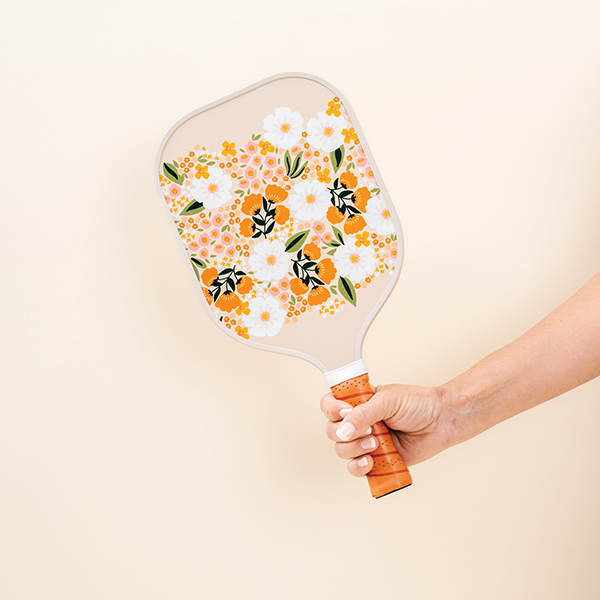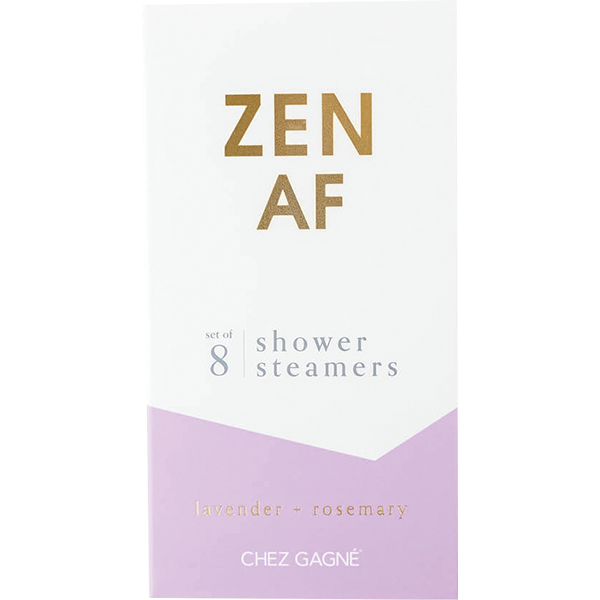Light Up Your Bottom Line
Article Resources
Aromatique
501.362.7511
Aromatique.com
Crystal Journey Candles
800.808.9425
CrystalJourneyCandles.com
Illume
888.245.5863
IllumeCandles.com
National Candle Association
202.393.1778
Candles.org
Romanza Gifts
206.706.1764
RomanzaGifts.com
Root Candles
800.BUY.ROOT
RootCandles.com
Spa at Home
866.224.8811
SpaatHome.com
The Blue Trumpet
888.449.0327
TheBlueTrumpet.com
Unity Marketing, Inc.
717.336.1600
UnityMarketingOnline.com
Additional Resources
A Cheerful Giver
888.CHEERFUL
ACheerfulGiver.com
Art Dreams
805.642.6444
ArtDreamsHome.com
Beanpod Candles
866.394.6313
SoyBasics.com
Bistro Candles
503.641.7397
BistroCandles.com
Dayna Decker Environments
818.762.6066
Lumetique
For Every Body
801.377.2494
ForEveryBody.com
Joya Candle
718.852.6979
JoyaCandle.com
Laurence Candle Company
800.7.CANDLE
LaurenceCandle.com
Paddywax
866.PADDYWAX
Paddywax.com
Vance Kitira International
973.237.1210
VanceKitira.com
Zodax
800.800.3443
Zodax.com
At Romanza Gifts, candles not only bring in the sales, they are also a big part of Romanza’s personality, according to store owners John Sterlin and Vince Harris. “Many customers walk in the front door and the first thing they say is, ‘It smells wonderful in here!'” Sterlin says. “Visually, the candles are quite engaging, too. Most candles and their packaging are quite colorful and interesting,” which not only helps sell candles but also adds interest and depth to other product displays. There are a lot of reasons why candles have been a part of Romanza’s two Seattle locations from the outset, Sterlin says. “Having them in the shop was essential.”
Since the first Romanza Gifts opened in 1999, “our candle sales have increased every month,” Sterlin says. “From our perspective it seems that customers are buying more candles. If this is the case everywhere, I can’t speak to that.” Pam Danziger can. As the president of Unity Marketing in Stevens, PA, Danziger’s job is to learn all she can about consumers, from the specific purchases they make, to what motivates those purchases, to which retailers are capturing the most sales. The author of several books on consumer behavior, including Why People Buy Things They Don’t Need: Understanding and Predicting Consumer Behavior, (Dearborn Trade Publishing, 2004) and Let Them Eat Cake: Marketing to the Masses as Well as the Classes (Dearborn, 2005), Danziger has been surveying candle consumers every year since 1996 (when the market was worth a mere $1.5 billion), giving her an in-depth understanding of candle buyers’ habits and the forces that drive their purchases. In Danziger’s view, candles are “a category where there’s always going to be a lot of growth, just because of the sheer fact that almost everybody buys candles.” Market growth
A generation ago, candles were bought for one basic purpose: home decor accents, mostly for the dinner table. Now they’ve not only taken center stage as home decor focal points in every room—they’re also among the products most frequently purchased for stress reduction, and are used frequently for room fragrance and freshness. In fact, Americans spend more on candles than any other air-freshening product. And of course candles are an incredibly popular gift purchase today.
Danziger’s surveys show that consumers spent more than $3.7 billion on candles in 2004, up almost 10 percent from the previous year. Buyers also spent more than $1 billion on candle accessories, up 17 percent from 2003. Based on informal surveys of the top 10 US candle manufacturers, the National Candle Association estimates that 2004 candle sales were $2.2 billion. Executive Vice President Valerie Cooper says that getting a solid read on the market “is tough,” because “most of the candle companies are privately held companies and don’t report their total sales.”
Cooper adds that the NCA estimates there has been “a little growth” in the candle industry recently, with some of the growth in the US market due to the fact that federal tariffs on candle imports increased from 54 percent to 108 percent in 2004. The tariff increase is now “starting to have an impact” at the store-sales level, she says.
Danziger paints a brighter picture. According to her research, sales were up nearly 35 percent from 2002 to 2004. “Candle sales were plateauing for a time, but they’re coming back really strong,” she says, with some retailers capturing more sales than others. From 2002 to 2004, mass merchants (including grocery and drug stores) actually declined in their share of the total candle market by one percentage point, and department-store sales were particularly hard hit, with a six percent drop in their share of the market.
Selling strategies
What’s a gift retailer to do to keep the sales fires burning? First, Danziger advises retailers to “do the simple things, like cross-merchandising. Integrate candles into other lines, such as home decor” to create exciting eye-catching displays that help customers visualize what the candles might look like displayed in their homes.
She also offers advice for what gift shop owners shouldn’t do: Don’t try to compete head-to-head with mass merchandisers. “If [candle buyers] want to ‘go discount,’ they know where the Wal-Mart is.” She adds that middle- and high-income shoppers “do shop there,” but when they “want something special, that’s when they’re going to a specialty gift shop.”
To distinguish themselves from mass merchandisers, gift shop retailers should focus on “specialty candles that have a more upscale look and feel.”
A.J. Chad, president of Spa at Home in Tallahassee, FL, which makes and wholesales a variety of candle products—from traditional wax candles to refillable gel candles to oil lamps—says Danziger’s advice is right on target. “While lower price points and channel control is the game mass retailers play, specialty retailers need to separate themselves by customer service, product differentiation and newness, and store innovation and visuals,” he says. “All of these steps will lead to store branding, which is very important in today’s world.”
Just a few years ago, “you couldn’t really say that there was a luxury candle business,” says Danziger, but “today there definitely is. Consumers don’t necessarily have to be buying more candles, but if they’re spending more [per candle], it can really result in an up-tick in overall sales.” She adds that “we’re definitely seeing more luxury candles, more expensive units” that appeal to a wide range of consumers.
But there’s a limit. Chad says “consumers are always willing to pay for higher quality, but the question is: How much extra? In candles, there is a ceiling.” As a general rule, he says, “people will not spend more than $25 unless the product is really extraordinary.”
Spa at Home’s best-selling candles are part of the company’s natural-wax line, which features vegetable-wax based candles on attractive pewter bases. The candles come in a variety of eye-catching colors and engaging fragrances, are smoke-free, and burn up to 50 percent longer than the average candle.
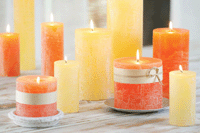 Customers have been responding well to the company’s new and established product lines, Chad says. “While quarters one and two in 2005 were sluggish, we were pleasantly surprised by the strength of orders from new and old customers in quarters three and four. Considering the fact that the home-fragrance market is now in a mature state, we had a very successful 2005.”
Customers have been responding well to the company’s new and established product lines, Chad says. “While quarters one and two in 2005 were sluggish, we were pleasantly surprised by the strength of orders from new and old customers in quarters three and four. Considering the fact that the home-fragrance market is now in a mature state, we had a very successful 2005.”
At Root Candles, a candle-maker and wholesaler based in Medina, OH, Retail and Creative Director Laura Jones says customers are “willing to pay for a candle that burns well.”
The company recently introduced its Dillar candle, a combination dinner and pillar candle, which has been well received in the market. “Companies that can prove to the consumer that they can provide a quality product . . . are going to succeed,” Jones says, adding that “consumers are much more educated than the big boxes give them credit for.”
Bill Bright, the aptly named president and owner of The Blue Trumpet, a candle wholesaler based in Needham, MA, couldn’t agree more. Consumers are much more knowledgeable about materials used in products and will seek out tea lights and candles that are soy-based, for example. They are also very selective in terms of what essences are used in aromatherapy tea lights and scented candles.”
The Blue Trumpet’s primary line is its Capiz Shell Collection, which consists principally of tea light holders, made with natural Capiz shells found in the Philippines, that when assembled, resemble a lotus flower. “The shells are translucent and, especially with good colors, give a warm serene glow when illuminated with a simple tea light,” Bright says, adding that “to date, our best success has been in the New Age market, where the lotus motif is universally recognized.”
Sales for 2005 were up 20 to 25 percent over 2004, Bright says. “I think that candles are a staple product for the gift industry. There is, and will always be, a core group of consumers who are committed candle users. Fortunately for them, importers and domestic manufacturers have been able to develop a terrific number of interesting products, especially over the past five years or so.”
Emotional buying
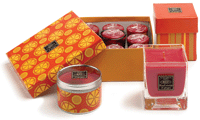 Candles are “indulgence items that give consumers an emotional lift” and signal a break from the ordinary, Danziger says. Focusing on that emotional experience is key to candle sales just as it is to retailing in general. “Anybody in the gift business ought to be looking seriously at all kinds of products that provide an experiential boost,” she says. “Too many gift stores are focused on home decor, when what they really need to do is shift their emphasis to the experience, because gifting is all about the experience, about connecting emotionally.”
Candles are “indulgence items that give consumers an emotional lift” and signal a break from the ordinary, Danziger says. Focusing on that emotional experience is key to candle sales just as it is to retailing in general. “Anybody in the gift business ought to be looking seriously at all kinds of products that provide an experiential boost,” she says. “Too many gift stores are focused on home decor, when what they really need to do is shift their emphasis to the experience, because gifting is all about the experience, about connecting emotionally.”
 At Spa at Home, Chad agrees that candle sales are “not just about the candle anymore. It’s about the ‘feeling’ that is evoked when someone wants to light a candle, a warm romantic and relaxing feeling.”
At Spa at Home, Chad agrees that candle sales are “not just about the candle anymore. It’s about the ‘feeling’ that is evoked when someone wants to light a candle, a warm romantic and relaxing feeling.”
Cosmo Corigliano, president of candle-maker Crystal Journey Candles in Essex, CT, says for maximum sales, candles should be positioned as “part of an overall experience that includes all of the human emotions.” In fact, Crystal Journey’s best-selling candles are part of their Herbal Magic line, which has 28 “themes,” including Love, Money, Angel’s Influence, and Manifest a Miracle. The best candles “should elicit memories of our life experiences,” says Corigliano. “This is accomplished through packaging, colors and—just as importantly—the fragrance. Smell is one of the strongest senses to remember past life experiences.”
The vast majority of candles sold in the US are scented. Scented candles represent 45 percent of the home fragrances market, the biggest slice of the home-fragrance market, outselling sprays, diffusers, potpourri, incense, simmerers and car-fresheners combined, Danziger says.
According to the NCA, 75 percent of consumers consider fragrance to be an “extremely important” attribute when purchasing candles. And the industry accommodates them. With more than 400 candle manufacturers in the US and “many more mom-and-pops,” the NCA estimates that more than 10,000 candle scents are now on the market. (Surprisingly, consumers still like vanilla best, according to NCA research.)
At Root Candles, Jones says her customers are demanding organic, complex fragrances. “It’s wonderful to find customers asking for fragrances that were unheard of five years ago, [such as] leather, tobacco, lemongrass and tomato vine,” she says. “It shows how open-minded our customers are. They are not influenced by others but [are] extremely individual. They embrace the scents that make them happy.”
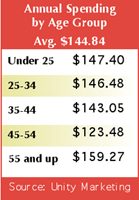 According to Carol Steele, vice president of marketing and product development at Illume, a maker of premium, hand-poured candles in Sun Valley, CA, “fragrance will always be the [sales] driver, so I suggest [retailers] light candles whenever possible.” Illume has “very loyal customers when it comes to certain fragrances,” she says. “Currently we are noticing a trend toward more sophisticated fragrances, more unique blends with equally sophisticated names. Customers may still want to identify that the fragrance is primarily a floral or a spice, but it is about the unique layering of the notes.” The company’s pillar candles, which come in 30 different fragrances, are currently selling best.
According to Carol Steele, vice president of marketing and product development at Illume, a maker of premium, hand-poured candles in Sun Valley, CA, “fragrance will always be the [sales] driver, so I suggest [retailers] light candles whenever possible.” Illume has “very loyal customers when it comes to certain fragrances,” she says. “Currently we are noticing a trend toward more sophisticated fragrances, more unique blends with equally sophisticated names. Customers may still want to identify that the fragrance is primarily a floral or a spice, but it is about the unique layering of the notes.” The company’s pillar candles, which come in 30 different fragrances, are currently selling best.
Yet despite the allure of fragrance, Cooper at the NCA cautions that not all candle purchases are driven by scent alone. “Fragrance is a very large determining factor,” she says, but ultimately, candle choice “depends on why you’re buying candles. If you’re buying candles to decorate and accent a room, then you have color [as the determining factor],” not scent. For maximum sales, she suggests gift shop owners talk to their customers to find out what is motivating their candle purchases, then steer them toward the candles that speak to those needs.
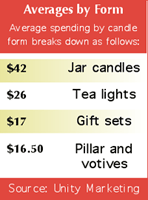 Diane Proctor, vice president and director of product development at candle-maker Aromatique in Heber Springs, AR, says scented candles remain so popular because they make it “easy for consumers to get fragrance and ambience when they want it, and they can turn it off when they don’t want it.” Aromatique candles are selling “very well,” she says. The company’s top sellers are The Smell of Christmas and Cinnamon Cider.
Diane Proctor, vice president and director of product development at candle-maker Aromatique in Heber Springs, AR, says scented candles remain so popular because they make it “easy for consumers to get fragrance and ambience when they want it, and they can turn it off when they don’t want it.” Aromatique candles are selling “very well,” she says. The company’s top sellers are The Smell of Christmas and Cinnamon Cider.
Along with other retailers, Proctor has noticed customers are becoming seriously fragrance-loyal, but sometimes they want a unique twist. Some candle buyers “want the same fragrance they’ve been buying, but they want a new container for that fragrance,” she says. “The consumer is also going for relaxing fragrances, such as a blend of vanillas, or warm fragrances.” The best way for gift retailers to sell more candles “is to light one in the store for the consumer to smell the fragrance.” Many shoppers are almost mesmerized by this approach, captured by the smell, drawn to take a closer look, and soon at the register with a candle of their own.
Demographic details
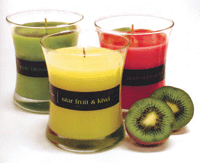 The NCA estimates that more than 95 percent of candle buyers are women, but Danziger says her research “doesn’t bear that out at all.” Her data show that only 75 percent of candle purchasers are women. “It’s a big mistake to think it’s an exclusively female market,” she says, adding that when consumers buy candles, women and men spend almost equally: $145 per year for women, and $143 per year for men.
The NCA estimates that more than 95 percent of candle buyers are women, but Danziger says her research “doesn’t bear that out at all.” Her data show that only 75 percent of candle purchasers are women. “It’s a big mistake to think it’s an exclusively female market,” she says, adding that when consumers buy candles, women and men spend almost equally: $145 per year for women, and $143 per year for men.
What does it take for a gift retailer to appeal to the men in their customer base? “Focus on romance,” Danziger says. “When men buy a candle, romance is on the agenda. They’re not buying a candle to scent the house—they’re buying the candle to inflame romantic desire, which is the key to understanding the different buying psychologies.” Stocking candles with the word “romance” on the packaging “certainly can’t hurt,” she says with a laugh.
In terms of customer demographics by age, Danziger’s research indicates that the biggest buyers of candles are under 25 or over 55. Consumers in the middle, ages 25 to 34 in particular, “are more interested in and accepting of other more innovative home-fragrancing options,” which include scented sprays, diffusers, aromatherapy products of all kinds, potpourri and incenses.
Perhaps surprisingly, Danziger’s research reveals little distinction in spending levels among low-, middle- and high-income households. “Candle marketers, therefore, have to appeal to the needs and desires of the masses, rather than zeroing in on one specific consumer segment,” she says.
Growth strategies
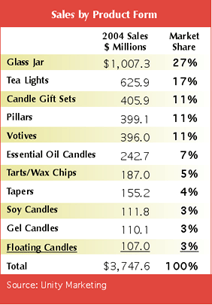 “Growth for a US candle manufacturer has to come from innovative products and niche marketing,” says Crystal Journey’s Corigliano. His view is that the candle industry “has not seen any measurable increase in the past few years,” but that consumers “continue to look for a unique and beautifully packaged product that looks and smells good and is priced at a reasonable level.”
“Growth for a US candle manufacturer has to come from innovative products and niche marketing,” says Crystal Journey’s Corigliano. His view is that the candle industry “has not seen any measurable increase in the past few years,” but that consumers “continue to look for a unique and beautifully packaged product that looks and smells good and is priced at a reasonable level.”
Steele at Illume, agrees: “The candle market will continue to be strong as companies continue to add elements of newness. This newness, or ‘fashion layer,’ can be in the form of new fragrance blends, upscale packaging… or colors that marry home decor trends.” She says Illume’s core line, which includes pillars, a boxed candle, tins and jars, continues to sell well.
At The Blue Trumpet, Bright sees the candle market “growing in the future, specifically the higher-end product range—$15.00 retail and up—probably in the five percent to six percent annual [growth] range. While products such as jar candles, plain tea lights, tarts and votives are clearly commodity items, candles and related products that tell a story, make a statement, or are part of a spiritual practice will continue to sell well for retailers.”
Bright advises gift shop owners to “be more resourceful in finding and selling new and different items. Executing this strategy successfully generally implies sourcing products from smaller specialty suppliers whose products are either handmade or manufactured in short runs, thus removing their appeal to mass merchandisers, whose pricing power is derived from the volumes they command.”
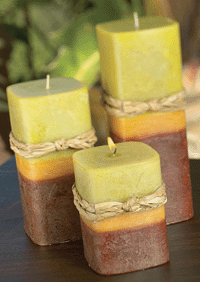 When customers find unique candles they love, “they talk about them,” says Romanza’s Sterlin. “Word-of-mouth is the best and only way to advertise candles. We get calls every day from people who say, ‘My friend told me about this candle,’ or ‘My mom was burning this candle at Thanksgiving.'”
When customers find unique candles they love, “they talk about them,” says Romanza’s Sterlin. “Word-of-mouth is the best and only way to advertise candles. We get calls every day from people who say, ‘My friend told me about this candle,’ or ‘My mom was burning this candle at Thanksgiving.'”
Sterlin and Harris love when their customers connect with Romanza’s products on that level because these gift shop owners also have a passion for the products they sell, a passion that keeps them reinventing their stores every day. “The fuel for us is when customers come in and tell us that Romanza is their favorite shop, or that a particular display is amazing,” says Sterlin. “It’s so important. If we weren’t able to express our creativity, we wouldn’t own the shops.”
It’s that creativity—on the manufacturing and the retailing sides of the industry—that means the difference between stagnating and thriving sales, Danziger says. In toda



















